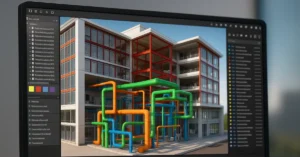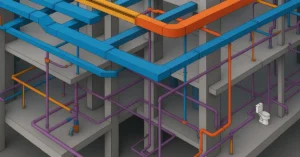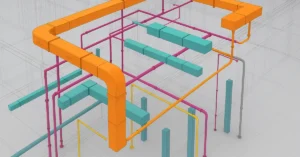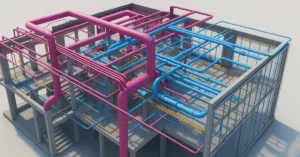Explore the powerful and bold brutalist buildings in Kuala Lumpur
Brutalist architecture is often polarizing. With its heavy, raw concrete aesthetic and unapologetically geometric forms, Brutalism can appear cold or bold, dreary or daring. In Kuala Lumpur—a city often celebrated for its Islamic motifs, colonial facades, and gleaming skyscrapers—the presence of Brutalist buildings might come as a surprise. Yet, scattered across the city are powerful structures that represent a unique and underappreciated period in Malaysia’s architectural history.
This blog explores the most notable brutalist buildings in Kuala Lumpur, highlighting their significance, architectural form, and cultural role. As a fast-developing city, KL has seen many architectural eras come and go—but the Brutalist movement continues to make a silent yet powerful impression on its skyline.
Understanding Brutalism in Malaysia’s Urban Development
Brutalism first emerged in the post-WWII period, with Western countries embracing its efficiency and functionalism. In Malaysia, the style took hold in the 1960s and 1970s, a time when the country was asserting its post-colonial identity. Brutalist buildings became a symbol of progress, independence, and utilitarian values.
Concrete, affordable and durable, suited Malaysia’s tropical climate and economic conditions. Government buildings, public housing, universities, and cultural institutions across Kuala Lumpur adopted this new style, creating a visually cohesive yet often unrecognized layer in the city’s built environment.
Top Brutalist Buildings in Kuala Lumpur
1. Dewan Bahasa dan Pustaka (DBP)
Location: Jalan Dewan Bahasa
Year Completed: 1962
Perhaps the most recognizable brutalist landmark in KL, Dewan Bahasa dan Pustaka is a striking example of form following function. As Malaysia’s national language authority, the building exudes a sense of gravity and importance. Its solid concrete façade, angular projections, and lack of decorative excess embody Brutalism’s raw and utilitarian spirit.
Symbolically, the structure reinforces national identity—both through its function and form. Despite newer developments surrounding it, DBP still stands tall, a cultural and architectural statement.
2. MARA Building (Menara MARA)
Location: Jalan Raja Laut
Year Completed: 1965
One of the earliest high-rises in Kuala Lumpur, Menara MARA is a classic brutalist tower that emphasizes verticality and rigid repetition. Built to house Malaysia’s rural development and education initiatives, its no-nonsense design reflects the government’s post-independence priorities: modernization, equality, and progress.
The building’s simple concrete gridding and exposed textures are offset by its robust and proud function—a space for education and upliftment. Though not flashy, it remains a symbol of structural honesty and purpose.
3. Kompleks Dayabumi
Location: Jalan Sultan Hishamuddin
Year Completed: 1984
While some argue Kompleks Dayabumi leans more toward Islamic modernism, there are unmistakable brutalist elements in its structure. The heavy concrete skeleton and grid-based façade design reflect Brutalist tendencies, although softened by Islamic arches and patterns.
This hybrid approach—merging modernist rigor with cultural ornamentation—makes Dayabumi unique. It showcases Malaysia’s ability to blend global architectural styles with local identity.
4. University of Malaya – Various Faculties
Location: Lembah Pantai, Kuala Lumpur
Year Built: 1960s–1970s
Malaysia’s oldest university features several Brutalist buildings across its campus, particularly in the Faculties of Engineering, Science, and Social Sciences. Designed for function and resilience, these structures are characterized by boxy forms, overhangs for shade, and open-air corridors that facilitate airflow.
These academic buildings, though sometimes overlooked, have helped shape generations of Malaysian scholars. Their utilitarian style echoes the nation’s pragmatic educational ambitions in a rapidly modernizing era.
5. National Library of Malaysia (Perpustakaan Negara Malaysia)
Location: Jalan Tun Razak
Year Completed: 1982
The National Library combines Malaysian vernacular motifs with a concrete-heavy brutalist base. Though the curved blue-tile roof steals visual attention, the lower levels show thick walls, deep recesses, and functional spaces that reflect Brutalist sensibilities.
The library serves as both a repository of national knowledge and an architectural metaphor—solid, grounded, and enduring. Its Brutalist base acts as a sturdy foundation for the cultural richness contained within.
6. Tunku Abdul Rahman Flats (TAR Flats)
Location: Jalan Tun Perak area
Year Built: 1960s
One of Kuala Lumpur’s earliest public housing projects, the TAR Flats embody the socialist-minded goals of Brutalism. Built to house low-income residents in the heart of the city, these flats use repetitive concrete modules and no-frills materials.
Though not preserved with the same prestige as modern developments, these flats are historical markers of KL’s social evolution. They represent a functional form of brutalism aimed at serving the many, not just the elite.
7. Angkasapuri Complex
Location: Jalan Pantai Baru
Year Completed: 1968
Once the headquarters of Malaysia’s Ministry of Information and national broadcaster RTM, Angkasapuri is a monumental structure that reflects Cold War-era governmental design. It features solid, geometric concrete blocks arranged in a series of elevated corridors and slabs.
With a broadcast tower adjacent, Angkasapuri was not only a symbol of communication and state power but also a stylistic tribute to brutalist ideals of monumental scale and austere design.
Why Brutalism Worked in Kuala Lumpur
Kuala Lumpur’s adoption of Brutalism was not just stylistic—it was pragmatic. Concrete was both affordable and well-suited for Malaysia’s humid weather. Brutalist buildings often included features like overhangs, internal courtyards, and ventilation blocks that made them surprisingly climate-responsive.
Brutalism also symbolized authority and function—important attributes for a nation building its identity after colonial rule. These structures housed government agencies, universities, and public service departments, showcasing strength and stability.
The Public Perception: Love or Hate?
Brutalist buildings in Kuala Lumpur provoke mixed reactions. Some view them as outdated relics that clash with the city’s modern skyline, while others see them as historically significant and architecturally brave. In recent years, there’s been a small resurgence of appreciation, especially among architects, urban explorers, and cultural historians.
Social media accounts documenting “ugly” or forgotten buildings often include KL’s brutalist gems—ironically fueling new interest and admiration for these designs.
Preservation Challenges and Cultural Value
Many Brutalist buildings in Kuala Lumpur face neglect, disrepair, or even demolition. In a city obsessed with sleek high-rises and commercial aesthetics, these concrete giants are often misunderstood.
Preservation efforts remain limited. Unlike colonial or Islamic heritage buildings, Brutalist structures are rarely considered “beautiful” or “worth saving.” However, this attitude is shifting as people recognize their cultural and architectural value. Some buildings, like Dewan Bahasa dan Pustaka, have become cherished symbols of identity and resilience.
Modern Interpretations of Brutalism in KL
Interestingly, elements of Brutalism have resurfaced in contemporary Malaysian architecture. Several new apartment buildings and commercial complexes incorporate raw concrete textures, exposed materials, and geometric facades—hallmarks of the Brutalist aesthetic. This re-interpretation shows a newfound respect for form-driven, utilitarian design that blends the past with the present.
Architects are now seeking inspiration from this movement, creating buildings that echo the raw strength of classic Brutalism while updating it for modern use and sustainability.
Conclusion
The brutalist buildings in Kuala Lumpur may not draw the same attention as the Petronas Towers or Islamic Art Museum, but they tell a different, equally important story. These structures represent a period of ambition, nation-building, and architectural experimentation. They are raw, honest, and resilient—qualities that mirror the Malaysian spirit during its post-independence transformation.
As urban development accelerates, preserving these icons of Brutalist architecture is not only about saving concrete; it’s about safeguarding memory, identity, and cultural diversity. If you’re walking through KL and see a massive, weathered, concrete block—pause. You might be looking at a powerful piece of Malaysian history hiding in plain sight.
If you’re interested in learning more about architecture firms in Europe, check out this comprehensive list of the top 50 firms compiled by Archgyan. From innovative startups to long-established industry leaders, this list has it all. Take a look and discover some of the most inspiring and influential architecture firms in Europe today.
If you’re interested in architecture and want to learn more about this amazing field, subscribe to our podcast on youtube
For more SketchUp tutorials, head to https://www.sketchupguru.com










